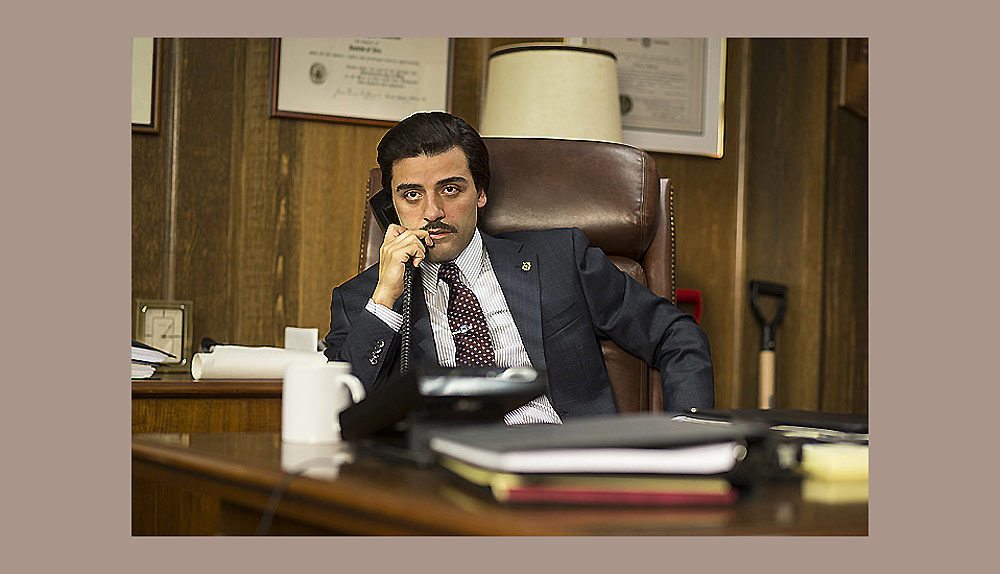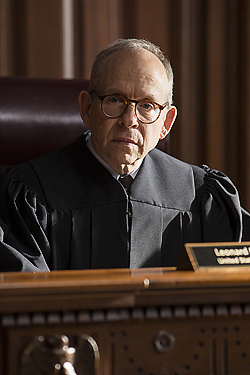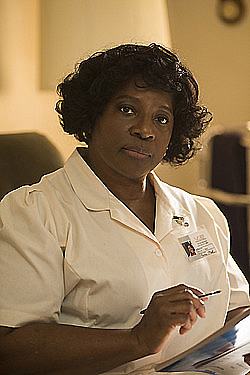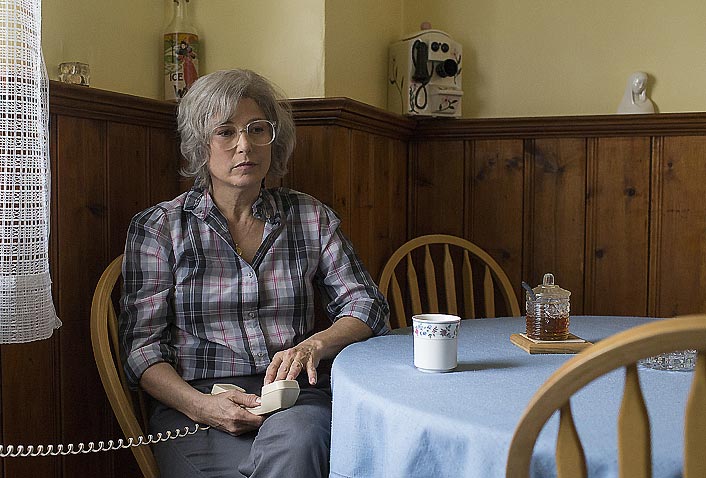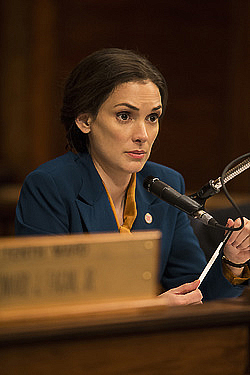Say it ain’t so… but I know it is… or at least can be and in the case of HBO’s Show Me a Hero, taken from true life happenings, certainly was.
A six part event series, Show Me a Hero, adapted from Lisa Belkin’s 1999 nonfiction work of the same name, delicately and deliberately, unravels a turbulent and complex sequence of events that occurred in the city of Yonkers in the late ‘80s.
At its apex teeters one overriding issue: A judicial decision meant to force the city’s constituents into integration by building a modicum of low income and average priced dwellings, meant to house the working class, in a middle class area. That was it. Simple. And not.
By the time Judge Sands issued his ruling, this battle had been going on for decades. The city had responded to previous orders to desegregate by, essentially, mouthing ‘Yes sir, we’ll get right on that,’ but doing nothing.
What the constituents of Yonkers either didn’t care about or didn’t understand was that the judge, angered by the blatant act of disrespect, was threatening their city with heavy duty fines to be charged daily, accompanied by definitive due-by dates, if there was no compliance. For the city officials the case was no longer a “black and white issue.” As one councilman pointedly put it: “This is now a green issue.”
It was the keen eye of producer Gail Mutrux who found and sent Belkin’s manuscript to a writer whose skill and passion she knew first-hand; Mutrux, had worked with David Simon on Homicide: Life on the Streets. In fact, she had found that book, authored by Simon, and was instrumental in bringing one of the more groundbreaking series of the era into reality.
Simon, for his part brought on longtime Baltimore Sun colleague William F. Zorzi and the two set about adapting the material for the screen. The project wound up in development for over 15 years as various professional commitments (The Wire, The Corner, Generation Kill, Treme, etc.) caused it to be bumped or shifted about in scheduling. Zorzi, using the original manuscript as a jumping off point, used the time to dig deeper. He visited the neighborhoods in question in search of real stories, interviewing those that had lived through the turmoil.
This diligence matters as it puts a very human face on the events that unfold. In fact some of the quieter moments are the most telling. A relatively young woman of 47, (LaTanya Richardson Jackson) who begins to lose her eyesight and may have to move from the home she knows so well. A young Hispanic mother (Ilfenesh Hadera) who strives to stretch her meager salary as much as she can to make a decent home for her children.
These and other stories are unobtrusively interwoven into the main theme. By the end of Part II they have begun to feel like family. Including a couple from the “right side” of the dividing line. Mary Dorman (Catherine Keener) is one of the vocal opposition who’s scared about the unforeseen ways the Judge’s order might affect her little slice of the American dream. “We’re not like those people,” she says to her husband at the start.
The majority of folks are afraid of the unknown. If we had a crystal ball perhaps it would allay all of our fears. However…
The Judge Sands’ mandate created such an eruption of outrage and vocal opposition from the citizenry there seemed no chance for any compromise. The fight would last for years incapacitating local governance, ruining one man’s political aspirations while, simultaneously, fueling others. The only difference between the goings on in the late ‘80s in those local halls of justice and the goings on during sessions of Congress today is that… well there isn’t much difference, really. Perhaps it was more of a foreshadowing.
And this is where our young man, deftly portrayed by Oscar Isaac, emerges as an adult.
Nick Wasicsko became a police officer of Westchester County and was working his way through law school when he decided to run for councilman of 7th ward, Yorktown Heights. He won. His father passed away prior to his winning the seat. He was 25-years-old and living with his mother.
Wasicsko, from all accounts and appearances was hardly subtle, humble nor shy. Boyish faced and confident with an eye for the ladies, he was smart and he was politic. He recognized the value in paying close attention and gleaned information from others who had been around the blocks of City Hall a few times.
Whatever happened to alert him that the moment had arrived to make a bigger move (which is played out in Part I of the HBO’s series), he declared his mayoral candidacy less than a week after passing the bar. At the age of 28, he ran an underdog campaign against six-time incumbent Angelo R. Martinelli to become Yonkers’ youngest mayor ever.
Image by Paul Schiraldi/courtesy of HBO Ironically Wasicsko never set out to be a hero, for in the beginning, he not only agreed with the opponents of the Federal decree, he had based his campaign on being the one who had supported a motion to have it appealed. It was a fluke, but it worked. He won the election. Right after he wins, however, he’s informed that the motion was turned down. Oops.
That he ended up on the other side of the issue came down to one thing: “The law is the law.”
As he saw it, his sworn obligation was his prime objective: to uphold the law. He was the guardian of the city. He would lead his people as a leader should.
The law said that East Yonkers should find room for the housing…. They’d find room for the housing. Period.
Wasicsko was a young man with high ambitions who had to grow up fast. You can’t go wrong if you follow the law, right?
The folks east of the Saw Mill River Parkway saw things differently and they were loath to have their area infiltrated with a mostly black and Latino populace; those who had been, by deliberate design, confined on the Parkway’s west side. The opponents were full of self-righteous bluster when stating their belief that the housing program would negatively affect their property values.
It is only one piece of the city’s recent history, but is made all the more relevant when one considers that a mirror scenario is being played out in Westchester County even today… Yes, in 2015.
Here’s what David Simon said drew him to this material:
“Show Me a Hero offered a perfect storm of a narrative about our enduring racial and class pathologies and the not-in-my-back-yard, don’t-tread-on-me sensibilities of modern libertarian and neoliberal politics. This is the grievous state of the American political dialectic, in which the only two operant currencies seem to be greed and fear.”
The terrific cast is adroitly directed throughout Parts I through VI by Paul Haggis (Million Dollar Baby, Crash). The fact that Hero educates even as it entertains is a huge plus and is owing to the mastery of his craft, the material from which he had to work and the players within the piece.
Show Me A Hero won’t wet everybody’s appetite… but it should.
The cast includes: Oscar Isaac, Winona Ryder, Jim Belushi, Jon Bernthal, Alfred Molina, Catherine Keener, Latanya Richardson Jackson, Peter Riegert, Terry Kinney, Clark Peters and Bob Balaban, Dominique Fishback, Natalie Paul, Carla Quevedo and Ilfenesh Hadera.
Show Me A Hero runs throughout August into September — Sundays and Monday nights on HBO and HBO2. (Click HERE for more information)
♦ ♦ ♦
Addendum:
I’m sitting in the front seat of one of the few second hand classic cars I once drove when tooling around Los Angeles with my buds back in the day. We were in the thick of our girls-just wanna-have-fun era; feeling all that and more.
Really not sure who among my pals, except for Chrissy, was with me this summer’s day. I remember Chrissy, however, because of a quick exchange that passed between us.
I’d had an encounter earlier that day with a stranger, a man had called me out of my name. I felt impelled to share what he’d said with my girls. So I said something about it being rather sad that racism was alive and kicking in LA that day.
“Oh, I don’t think racism exists anymore in this country,” Chrissy blithely responded. “A bit in the south maybe, but things are really a lot better, don’t you think?”
My friend Chris, a cute blonde, blue-eyed pixy and perky… She could have given Buffy a run for the perkiest-ever trophy. And she was fun. I-truly-never met anyone who didn’t like her. The two of us had hit it off from the moment we met.
But that day, I realized how far apart we were in our experiential reality of life in these United States and what it was like… if your skin-tone was any shade of brown.
Chrissy saw the gloss of it and she wasn’t wrong. It was her reality. I saw the shadows and I wasn’t wrong either. My reality was certainly just as true if not—to my mind—more so.
I wasn’t going to convince this ebullient young lady that her certainty was marred in any way. I realized this even as I stumbled through a litany about how things may appear to be different on the surface, but were not much different at all. Racism had gone covert. Hiding undergrown. Waiting for its moment.
That’s all I remember about the conversation. Chrissy’s face went flat as her insides formed a barrier, determined to hold on to her formed—probably long-held—belief. I stopped talking. My words were bouncing off ears of the deaf.
That was many-many years past. And here we are.
I haven’t seen Chrissy for quite a while, but I do think about her from time to time. Every time I watch CBS Good Morning, All In with Chris Hayes, TRMS, or The Daily Show. I think about her and wonder if Chrissy is still holding on to her belief.
I wonder.





